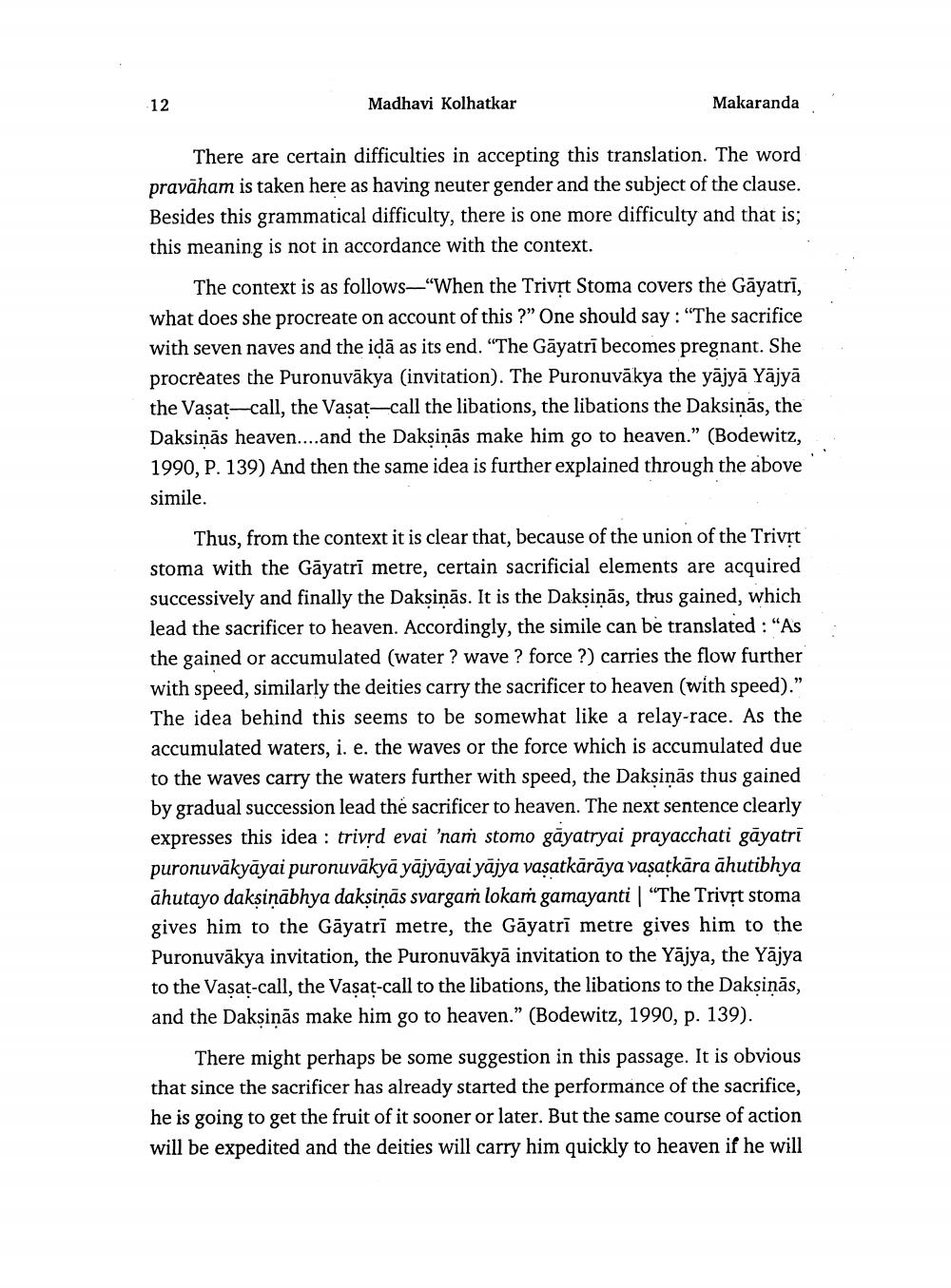________________
Madhavi Kolhatkar
Makaranda
There are certain difficulties in accepting this translation. The word pravāham is taken here as having neuter gender and the subject of the clause. Besides this grammatical difficulty, there is one more difficulty and that is; this meaning is not in accordance with the context.
The context is as follows—“When the Trivrt Stoma covers the Gāyatrī, what does she procreate on account of this?" One should say: "The sacrifice with seven naves and the idā as its end. “The Gāyatrī becomes pregnant. She procreates the Puronuvākya (invitation). The Puronuvākya the yājyā Yājā the Vaşat-call, the Vasat-call the libations, the libations the Daksinās, the Daksinās heaven....and the Daksinās make him go to heaven.” (Bodewitz, 1990, P. 139) And then the same idea is further explained through the above simile.
Thus, from the context it is clear that, because of the union of the Trivrt stoma with the Gāyatri metre, certain sacrificial elements are acquired successively and finally the Daksinās. It is the Daksiņās, thus gained, which lead the sacrificer to heaven. Accordingly, the simile can be translated : “As the gained or accumulated (water? wave ? force ?) carries the flow further with speed, similarly the deities carry the sacrificer to heaven (with speed).” The idea behind this seems to be somewhat like a relay-race. As the accumulated waters, i. e. the waves or the force which is accumulated due to the waves carry the waters further with speed, the Daksinās thus gained by gradual succession lead the sacrificer to heaven. The next sentence clearly expresses this idea : trivrd evai 'naṁ stomo gāyatryai prayacchati gāyatri puronuvākyāyai puronuvākyā yājyāyai yājya vasatkārāya vaşatkāra āhutibhya āhutayo dakşiņābhya dakşiņās svargam lokam gamayanti | “The Trivst stoma gives him to the Gāyatrī metre, the Gāyatri metre gives him to the Puronuvākya invitation, the Puronuvākyā invitation to the Yājya, the Yājya to the Vasat-call, the Vasat-call to the libations, the libations to the Dakșiņās, and the Daksinās make him go to heaven.” (Bodewitz, 1990, p. 139).
There might perhaps be some suggestion in this passage. It is obvious that since the sacrificer has already started the performance of the sacrifice, he is going to get the fruit of it sooner or later. But the same course of action will be expedited and the deities will carry him quickly to heaven if he will




